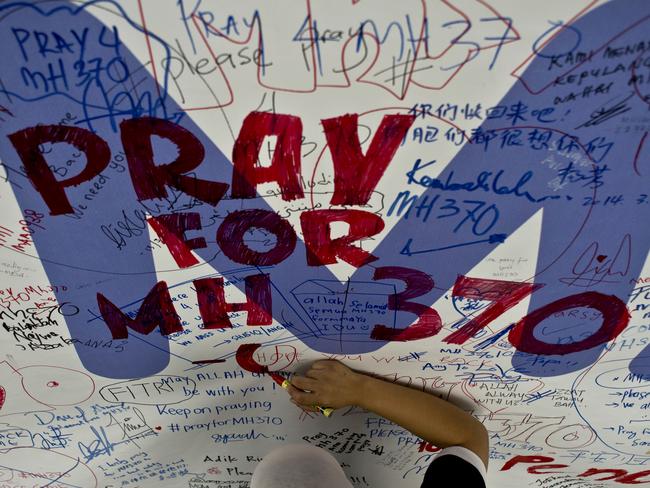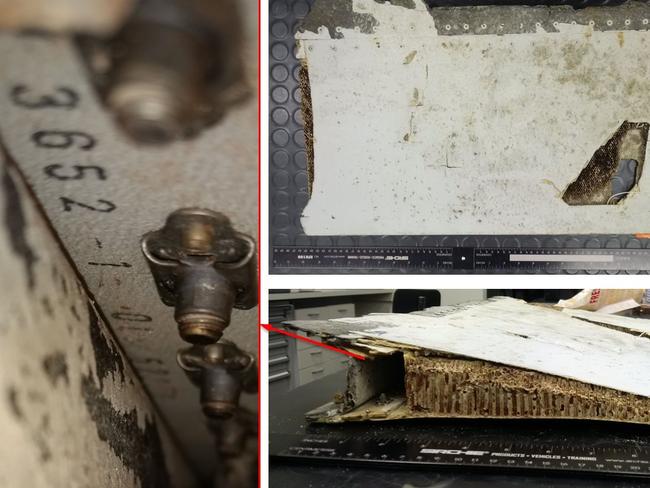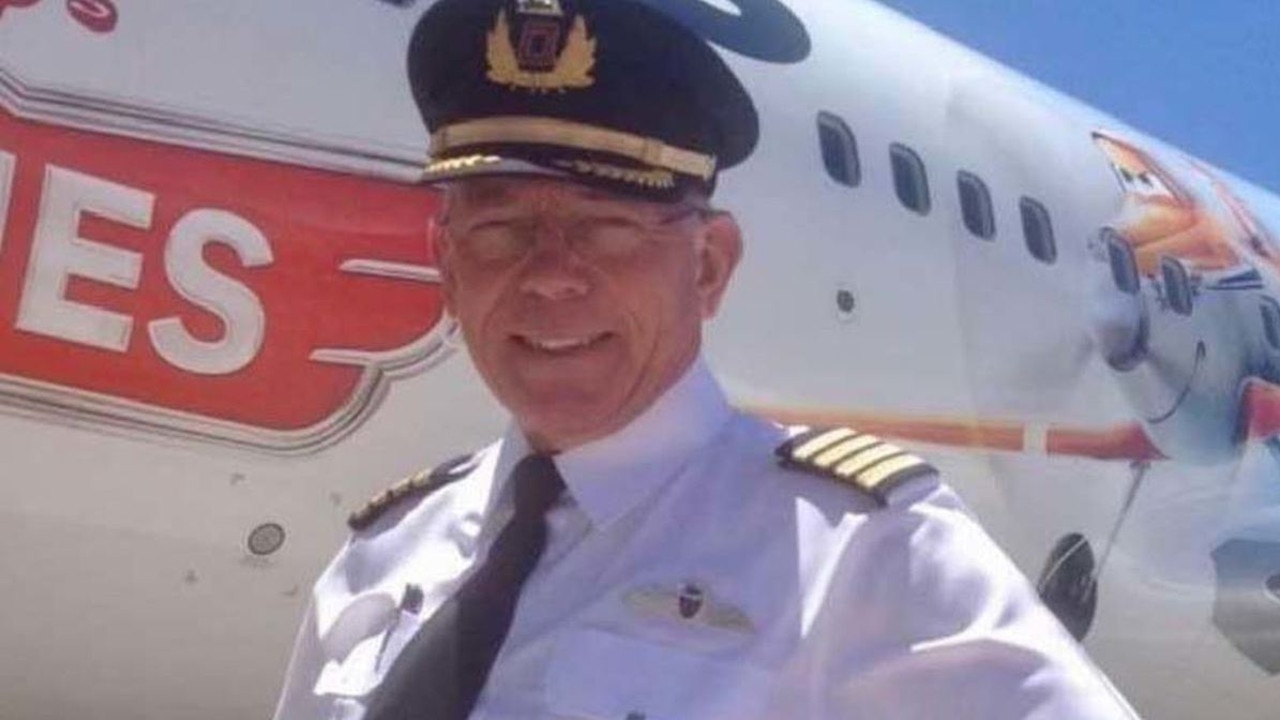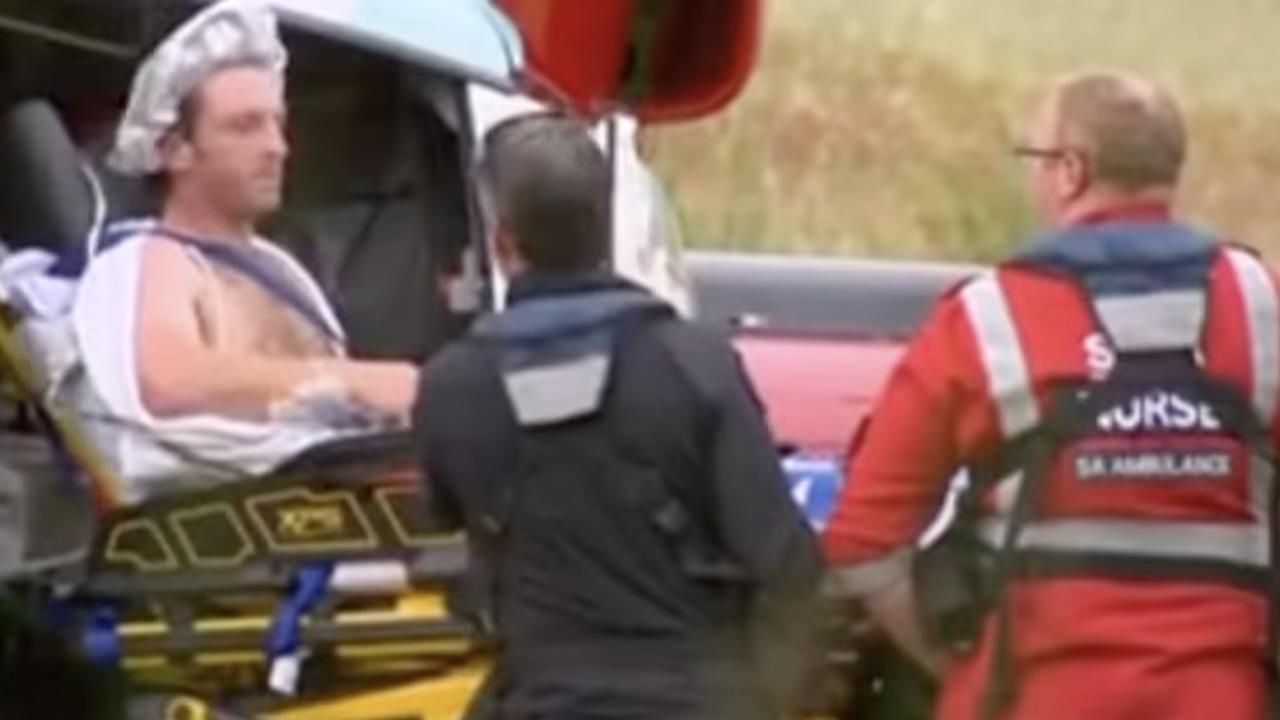How a bathroom break could have doomed Malaysia Airlines Flight MH370
A NEW book claims missing flight MH370 went down after the captain, Zaharie Ahmad Shah, took a badly-timed bathroom break.

IF THE captain hadn’t needed a bathroom break, there might be no mystery about Malaysia Airlines Flight 370.
That’s the theory of aviation journalist Christine Negroni in The Crash Detectives, a new book about the investigations of notable air disasters.
The Malaysia Boeing 777 took off from Kuala Lumpur at 12.42am on March 8, 2014, with 227 passengers and 12 crew — including two men in the cockpit, Captain Zaharie Ahmad Shah and First Officer Fariq Abdul Hamid, The New York Post reports.
About 25 minutes later, Captain Zaharie radioed controllers that the flight was “maintaining flight level 350.”


The jumbo jet was headed northeast at 10.6km over the South China Sea, speeding toward Beijing. All seemed well.
Negroni theorises Zaharie thought it was a good time for what aviators call a “biological break.” “Your aeroplane,” Zaharie probably told First Officer Fariq Abdul Hamid as he stepped out to the toilet.
While Zaharie was away from the flight deck, Fariq’s main job was to establish contact with Vietnamese controllers in Ho Chi Minh City. Kuala Lumpur controllers signalled the hand-off at 1.19pm by radioing: “Malaysian 370, contact Ho Chi Minh [on radio frequency] 120.9. Good night.”
“Good night. Malaysian 370,” Fariq replied.
Sometime around then, an explosive decompression sucked the air out of the jet’s cabin and set its passengers and crew on course for disaster, says Negroni, a former crash investigator who covered the Malaysia disaster for ABC News in the US.

There’s no physical evidence explaining what happened to the plane. The plane, its black boxes, and its passengers vanished over the Indian Ocean. The only wreckage found is debris that washed up on Indian Ocean islands and the shores of southern Africa.
Negroni dismisses the conspiracy theories about the plane’s disappearance that captivated the world and fuelled non-stop TV news coverage.
Investigators have found no evidence that the plane was hijacked or sabotaged. And Negroni sees no credible evidence supporting the theory Zaharie or Fariq were suicidal. There was plenty of evidence of pilot suicide in the 2015 Germanwings crash in France, she notes.
“Sick isn’t subtle,” she wrote on her blog last week.
But the more Negroni compared the known facts of Malaysia 370 with cabin-decompression disasters, “the more ‘yes’ answers I saw,” she said.
Because humans can’t survive on the thin air at 10.6km, plane cabins are pumped with air to a pressure level equivalent to about 2.4km of altitude. Negroni thinks something happened to Malaysia 370 that released the air in the cabin. It could have happened any number of ways — from structural flaws in the plane to faulty cabin door seals.

The decompression “would have made a deep and startling noise, like a clap or the sound of a champagne bottle uncorking, only much, much louder and sharper,” she says. “This would have been followed by a rush of air and things swirling everywhere … everything loose — would have been tossed about in the wind.”
The pilots’ first thoughts would have been: This is an emergency. In the cockpit, Fariq had 15 to 30 seconds to don an oxygen mask before he lost his mental acuity. The air 11km above the earth does not contain enough oxygen to support the brain’s ability to think rationally.
It’s likely Fariq faced another problem. Negroni suspects something was wrong with the cockpit oxygen system. It was serviced just before the flight — “that leaves an avenue for a problem in the reinstallation,” she says.
If that was the case, even if Fariq donned his mask, he still wouldn’t have the oxygen his brain needed for clear thinking. His “finger, hands, and arms would have started to move spastically. Fariq would have struggled to understand the rapid change from normal to pandemonium while irretrievable seconds of intellectual capacity ticked away.”

Experience was also a factor in the crash, Negroni writes. Fariq, now alone in the cockpit, was 27, and had 2700 hours of experience — but just 39 hours on the Boeing 777.
One of Fariq’s first tasks in the crisis would have been to send a mayday signal over the plane’s transponder. Instead of entering the mayday code into the transponder, Negroni says, the inexperienced first officer might have mistakenly switched it to standby. From the point of view of air controllers in Malaysia and Vietnam, that was the same as turning it off.
Whatever happened, the transponder signal stopped, investigators found. The plane was visible to radar. But without a working transponder, its altitude and identity were not detectable to air controllers or other aircraft. At that point, Flight 370 was lost.
What about Captain Zaharie? An oxygen mask would have dropped before him in the lavatory. The mask would have given him a few minutes of lucidity. Zaharie would have had to remove the mask to make his way back to the cockpit. It was just a few steps, but more than far enough for him also to suffer oxygen deprivation.

Whether or not he had an oxygen mask, Negroni says, Zaharie probably wasn’t able to regain control of the plane. She doubts he made it back to the cockpit — perhaps he fumbled with its door lock. If he’d gotten to the controls, his experience could have made a difference: Zaharie, 53, was a 33-year veteran of the airline with 18,000 hours in his log book.
Yet someone was operating the plane. By 1.30am — 11 minutes after Fariq’s last radio call — the plane had turned around to the southwest, heading back to Malaysian airspace.
About 20 minutes after that, the plane turned northward. Negroni suspects Fariq made that turn to head for a Malaysian airport where he’d received flight training. “I think he was no longer doing much reasoning, because his ability to do that was long gone,” she says.

Instead of landing, the plane continued northward before turning west toward the Indian Ocean. “When you consider how muddled Fariq’s mind must have been, you can see many ways in which MH-370’s bizarre flight path can be explained,” Negroni writes.
At some unknown point, the plane turned south over the ocean. It flew hours more, probably on autopilot, before it vanished for good.
The Malaysia 370 tragedy is one of many aviation disasters Negroni covers in her book. While plane crashes are rare — a person could fly every day for 123,000 years before being involved in a fatal crash, an MIT study found — disasters happen and planes disappear. Negroni writes: “Commercial aviation is both more and less advanced than people think.”
This story originally appeared in The New York Post and has been republished here with permission.



